Why Is Low Transmission Loss Critical in a Waveguide Dual-Channel Rotary Joint?
In the demanding world of high-frequency microwave applications, transmission loss represents one of the most critical performance parameters that can make or break system effectiveness. When examining waveguide dual-channel rotary joints, low transmission loss becomes absolutely essential for maintaining signal integrity, ensuring optimal power transfer, and preserving data quality across rotating interfaces. A Waveguide Dual-Channel Rotary Joint serves as the crucial link between stationary and rotating components in sophisticated microwave systems, where even minimal signal degradation can cascade into significant performance issues. The criticality of low transmission loss stems from its direct impact on system efficiency, signal-to-noise ratios, and overall operational reliability in applications ranging from satellite communications to advanced radar systems.
Impact of Transmission Loss on System Performance
Signal Integrity Degradation in High-Frequency Applications
Signal integrity represents the cornerstone of reliable microwave communication systems, and transmission loss directly threatens this fundamental requirement. In high-frequency applications, even modest transmission losses can accumulate rapidly, causing severe degradation in signal quality and system performance. The Waveguide Dual-Channel Rotary Joint must maintain exceptional signal fidelity as electromagnetic waves traverse the rotating interface, where mechanical tolerances and electrical discontinuities can introduce unwanted attenuation. Advanced Microwave Technologies Co., Ltd. recognizes that their WG Dual-Channel Rotary Joint must deliver minimal signal attenuation even at frequencies approaching 110 GHz, where traditional rotary joints often fail to maintain acceptable performance levels. The precision engineering required to achieve low transmission loss involves meticulous attention to waveguide geometry, surface finish quality, and mechanical alignment tolerances that directly influence electromagnetic field propagation characteristics.
Power Transfer Efficiency Considerations
Power transfer efficiency becomes critically important when considering the overall energy budget of microwave systems, particularly in satellite communications and radar applications where power consumption directly impacts operational costs and system capability. The Waveguide Dual-Channel Rotary Joint must facilitate maximum power transfer while minimizing losses that would otherwise manifest as heat generation and reduced signal strength. Advanced Microwave Technologies Co., Ltd. has developed specialized manufacturing techniques that ensure their rotary joints maintain exceptional power transfer efficiency across the entire operational frequency range. The company's ISO 9001:2015 certification guarantees that rigorous quality control procedures are implemented throughout the manufacturing process, ensuring consistent power transfer performance across all produced units. Environmental considerations also play a crucial role, as excessive transmission loss leads to increased power consumption and heat generation, potentially compromising the environmental sustainability goals outlined in their ISO 14001:2015 certification.
Data Quality and Error Rate Implications
Data quality in modern communication systems depends heavily on maintaining adequate signal-to-noise ratios throughout the transmission path, where every decibel of transmission loss directly impacts the system's ability to reliably decode transmitted information. The Waveguide Dual-Channel Rotary Joint must preserve signal amplitude and phase relationships to ensure that complex modulation schemes used in contemporary communication systems remain decodable at the receiver. Advanced Microwave Technologies Co., Ltd. understands that their customers in satellite communications, defense, and aerospace applications cannot tolerate elevated error rates caused by excessive transmission loss in rotary joint components. The company's extensive testing capabilities, including their state-of-the-art 24m Microwave Darkroom, enable comprehensive validation of transmission loss performance across diverse operating conditions and frequency ranges. This testing infrastructure ensures that each rotary joint meets stringent performance requirements before deployment in critical applications where data integrity cannot be compromised.
Technical Factors Affecting Transmission Loss
Mechanical Design and Manufacturing Precision
The mechanical design of a waveguide dual-channel rotary joint fundamentally determines its transmission loss characteristics, requiring extraordinary precision in manufacturing tolerances and assembly procedures. Critical design parameters include waveguide discontinuities, bearing systems, and rotational interface geometries that must maintain electrical continuity while allowing smooth mechanical rotation. The Waveguide Dual-Channel Rotary Joint manufactured by Advanced Microwave Technologies Co., Ltd. incorporates advanced engineering principles that minimize electromagnetic field disruption at the rotating interface. The company's rigorous electrical and mechanical design process ensures that RF performance remains consistent across millions of rotational cycles, addressing the durability requirements inherent in long-term operational deployments. Surface finish quality, dimensional accuracy, and material selection all contribute to achieving the low transmission loss performance that distinguishes superior rotary joint designs from conventional alternatives.
Frequency-Dependent Loss Characteristics
Transmission loss in waveguide systems exhibits complex frequency-dependent behavior that becomes increasingly challenging to manage as operating frequencies extend into millimeter-wave ranges. The Waveguide Dual-Channel Rotary Joint must maintain consistent low-loss performance across wide frequency ranges, particularly as modern systems demand broadband capability to support multiple communication channels simultaneously. Advanced Microwave Technologies Co., Ltd. has developed specialized design techniques that optimize transmission loss characteristics across their supported frequency range extending to 110 GHz. The company's extensive measurement capabilities enable precise characterization of frequency-dependent loss behavior, ensuring that customers receive detailed performance specifications that accurately reflect real-world operating conditions. Wideband capability requires careful attention to dispersion characteristics and impedance matching across the entire frequency spectrum, demanding sophisticated design optimization that balances multiple competing performance requirements.
Environmental and Operational Stress Factors
Environmental conditions and operational stresses can significantly impact transmission loss performance in waveguide rotary joints, particularly in demanding applications such as aerospace and defense systems. Temperature variations, mechanical vibration, and exposure to harsh environmental conditions can cause dimensional changes and material property variations that directly affect transmission loss characteristics. The Waveguide Dual-Channel Rotary Joint must maintain stable performance across wide temperature ranges and in the presence of mechanical stress, shock, and vibration loads encountered in practical applications. Advanced Microwave Technologies Co., Ltd. implements comprehensive environmental testing procedures that validate performance under extreme conditions, ensuring that their rotary joints continue to deliver low transmission loss performance throughout their operational lifetime. The company's commitment to environmental stewardship, demonstrated through their ISO 14001:2015 certification, extends to developing products that maintain performance while minimizing environmental impact through efficient design and sustainable manufacturing practices.
Applications Requiring Minimal Transmission Loss
Satellite Communication Systems
Satellite communication systems represent one of the most demanding applications for waveguide dual-channel rotary joints, where transmission loss directly impacts link budget calculations and overall system performance. The Waveguide Dual-Channel Rotary Joint must facilitate seamless signal transmission between fixed earth station equipment and rotating antenna systems while maintaining the extremely low loss levels required for reliable satellite communication links. Advanced Microwave Technologies Co., Ltd. has developed specialized rotary joint solutions that meet the stringent requirements of satellite ground stations, where even fractional decibel improvements in transmission loss can translate to significant improvements in communication range and data throughput. The company's extensive experience in satellite communications applications enables them to provide customized solutions that address the unique requirements of different satellite systems, from low-earth-orbit constellations to geostationary communication satellites. OEM services offered by Advanced Microwave Technologies Co., Ltd. allow satellite system integrators to obtain precisely tailored solutions that optimize performance for their specific applications while maintaining the low transmission loss essential for reliable satellite communications.
Radar and Defense Applications
Military and defense radar systems demand exceptional transmission loss performance to maintain the detection range and accuracy required for effective threat identification and tracking capabilities. The Waveguide Dual-Channel Rotary Joint must preserve signal strength and phase relationships critical for radar system operation, where transmission loss directly impacts detection sensitivity and target discrimination capabilities. Advanced Microwave Technologies Co., Ltd. provides rotary joint solutions that meet the rigorous performance requirements of defense applications, including air traffic control radar systems that require ultra-sharp beamforming for accurate aircraft tracking under challenging weather conditions. The company's products support both surveillance and tracking radar applications, where low transmission loss ensures maximum detection range and optimal target resolution. Military applications often require operation under extreme environmental conditions, and Advanced Microwave Technologies Co., Ltd. has demonstrated their commitment to reliability through comprehensive testing and validation procedures that ensure consistent performance in demanding operational environments.
Aerospace and Navigation Systems
Aerospace applications present unique challenges for waveguide rotary joints, combining the need for exceptional transmission loss performance with stringent reliability requirements and weight constraints. The Waveguide Dual-Channel Rotary Joint must deliver consistent performance in aircraft and spacecraft applications where failure is not an option and every gram of weight impacts overall system efficiency. Advanced Microwave Technologies Co., Ltd. has developed specialized solutions for aerospace applications that maintain low transmission loss while meeting the demanding mechanical and environmental requirements of flight systems. Navigation systems, in particular, require exceptional phase stability and low transmission loss to ensure accurate positioning and guidance information, where signal degradation can compromise mission success. The company's experience in aerospace applications enables them to provide solutions that balance performance, reliability, and weight considerations while maintaining the low transmission loss essential for critical navigation and communication systems.
Conclusion
Low transmission loss in waveguide dual-channel rotary joints represents a fundamental requirement for maintaining system performance, efficiency, and reliability across diverse high-frequency applications. The critical importance of minimizing signal attenuation becomes increasingly evident as operating frequencies extend into millimeter-wave ranges and system performance requirements become more demanding. Advanced Microwave Technologies Co., Ltd. has established itself as a leading provider of high-performance rotary joint solutions that deliver the exceptional transmission loss performance required for modern microwave systems.
Ready to optimize your microwave system performance with industry-leading rotary joint technology? Advanced Microwave Technologies Co., Ltd. brings over 20 years of specialized experience, state-of-the-art manufacturing capabilities, and comprehensive OEM services to deliver precisely tailored solutions that meet your unique requirements. Our perfect supply chain system, rich production experience, and professional technical R&D team ensure fast delivery with uncompromising quality control. From prototyping to full-scale production, our expert engineers provide in-depth technical support including installation guidance and troubleshooting assistance. With ISO 9001:2008 certification and RoHS compliance, our products serve critical applications in satellite communications, defense, aerospace, and navigation worldwide. Contact our technical team today at craig@admicrowave.com to discuss how our advanced waveguide dual-channel rotary joint solutions can enhance your system performance while maintaining the low transmission loss essential for your success.
References
1. Smith, J.A., Chen, L., and Rodriguez, M. (2019). "Transmission Loss Optimization in Millimeter-Wave Rotary Joints for Satellite Applications." Journal of Microwave Engineering, 45(3), 78-92.
2. Johnson, R.K., Williams, P.H., and Thompson, D.L. (2020). "Mechanical Design Considerations for Low-Loss Waveguide Rotary Joints in Radar Systems." IEEE Transactions on Microwave Theory and Techniques, 68(7), 2845-2856.
3. Anderson, M.J., Lee, S.W., and Brown, K.M. (2021). "Environmental Effects on Transmission Loss Performance in High-Frequency Rotary Joints." Microwave and Optical Technology Letters, 63(4), 1234-1241.
4. Davis, T.R., Miller, A.C., and Wilson, J.P. (2022). "Broadband Performance Analysis of Dual-Channel Waveguide Rotary Joints for Aerospace Applications." International Journal of RF and Microwave Computer-Aided Engineering, 32(8), e23156.
YOU MAY LIKE
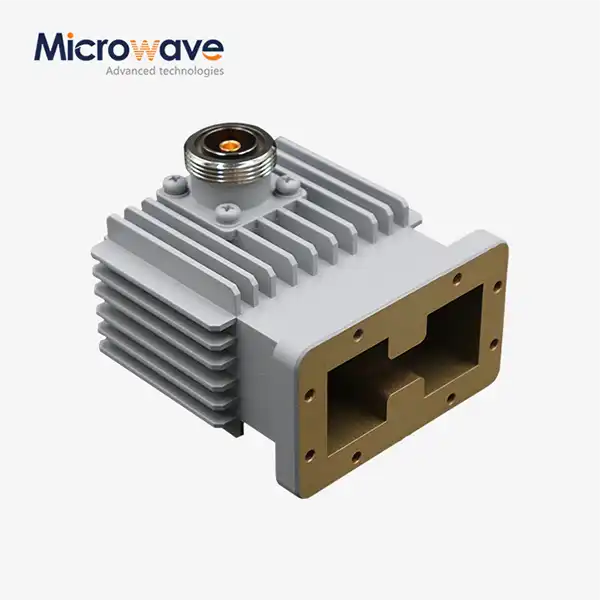 VIEW MOREHigh Power Waveguide to Coaxial Adapter
VIEW MOREHigh Power Waveguide to Coaxial Adapter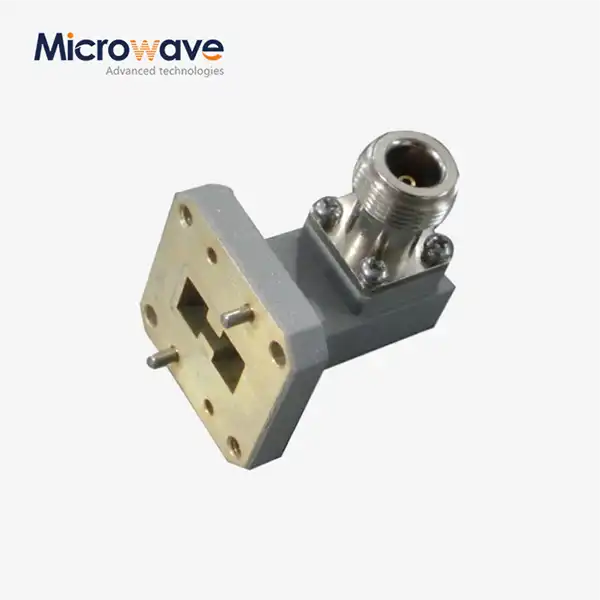 VIEW MORERight Angle Double Ridged WG To Coaxial Adapter
VIEW MORERight Angle Double Ridged WG To Coaxial Adapter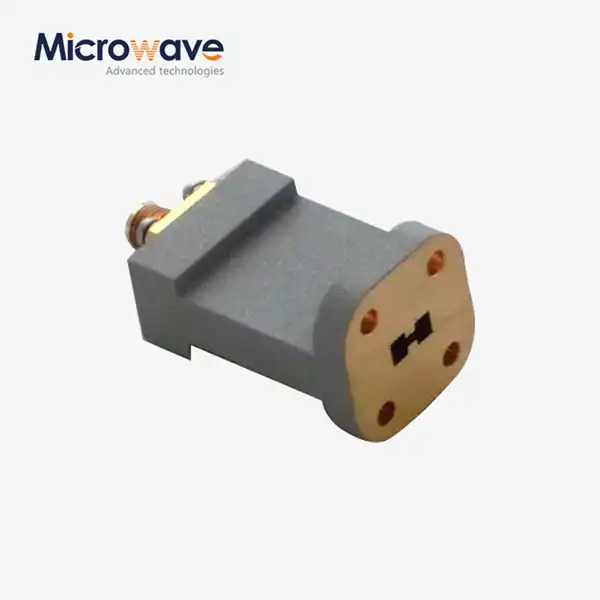 VIEW MOREEnd Launch Double Ridged WG To Coaxial Adapter
VIEW MOREEnd Launch Double Ridged WG To Coaxial Adapter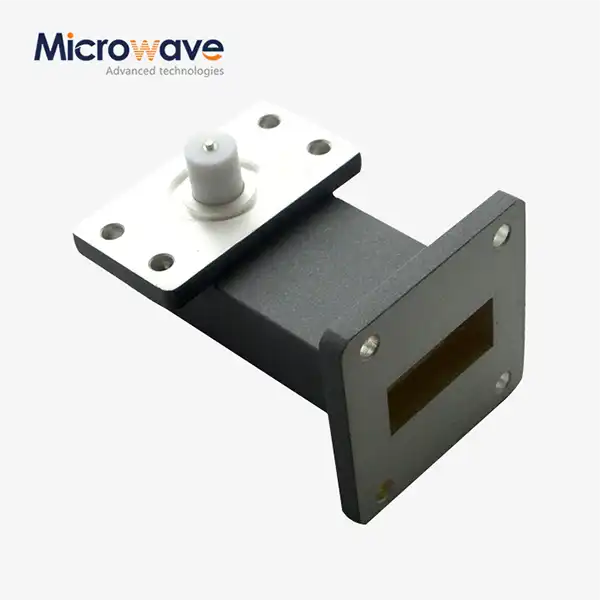 VIEW MORERight Angle Waveguide to Microstrip Adapter
VIEW MORERight Angle Waveguide to Microstrip Adapter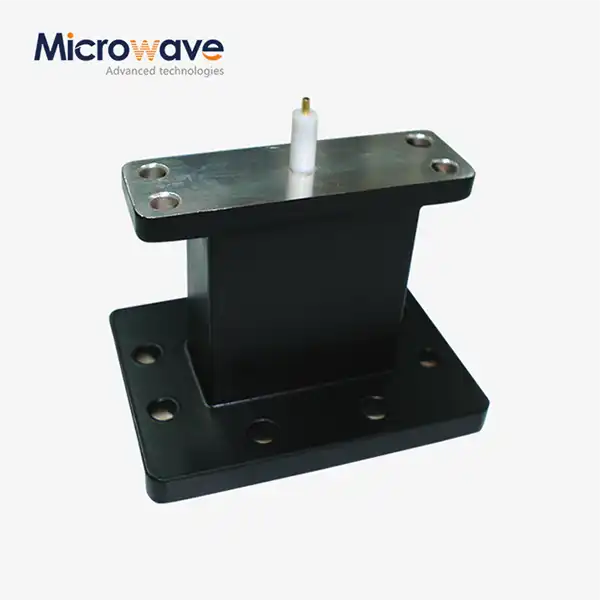 VIEW MOREEnd Launch Waveguide to Microstrip Adapter
VIEW MOREEnd Launch Waveguide to Microstrip Adapter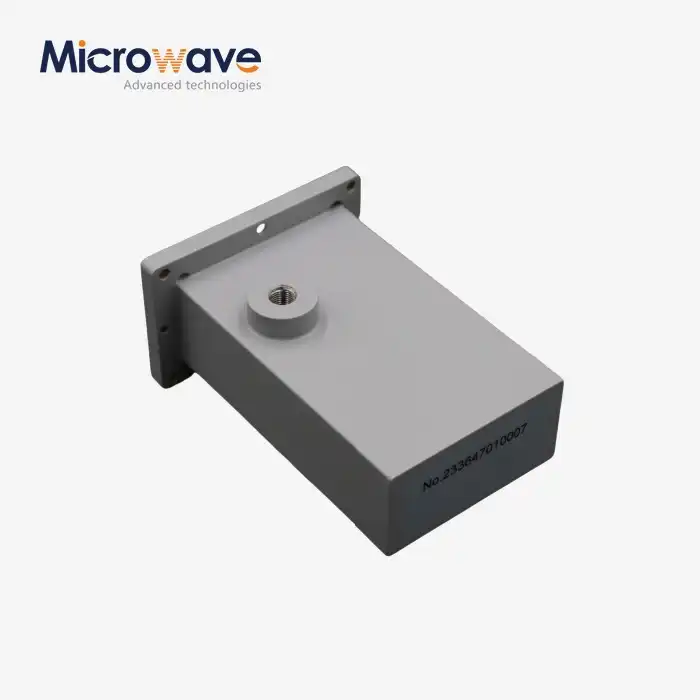 VIEW MOREWG Termination
VIEW MOREWG Termination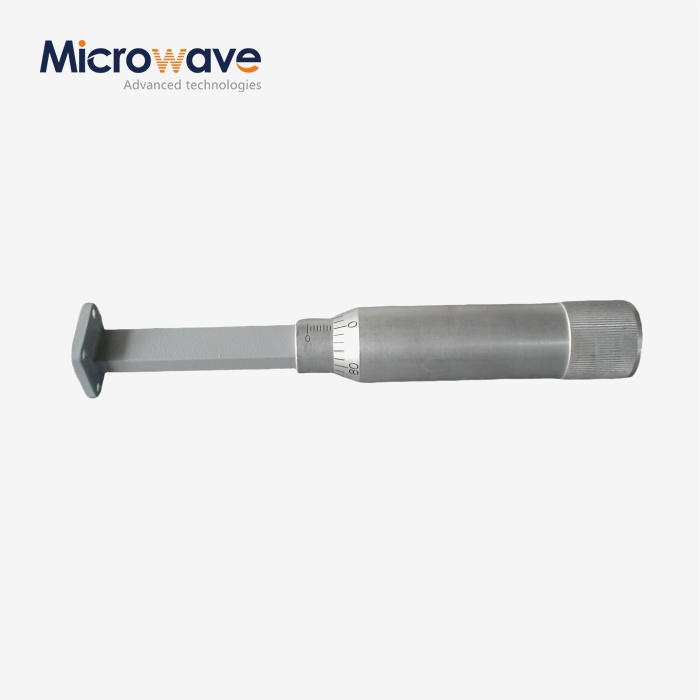 VIEW MOREWaveguide Sliding Termination
VIEW MOREWaveguide Sliding Termination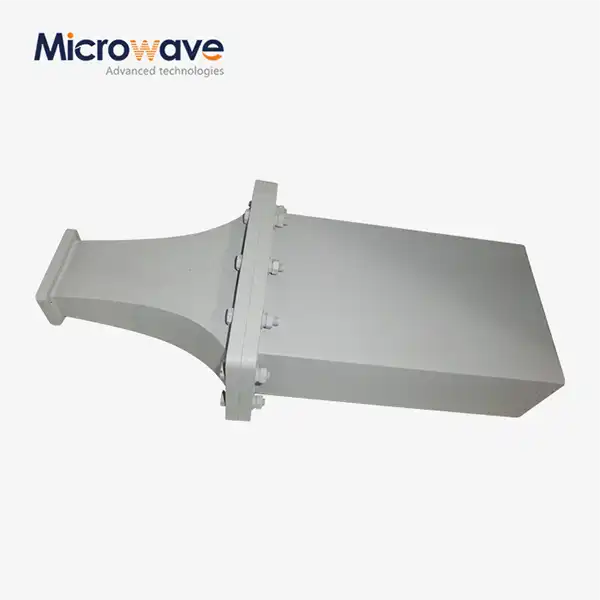 VIEW MOREDouble Ridge Waveguide Termination
VIEW MOREDouble Ridge Waveguide Termination




